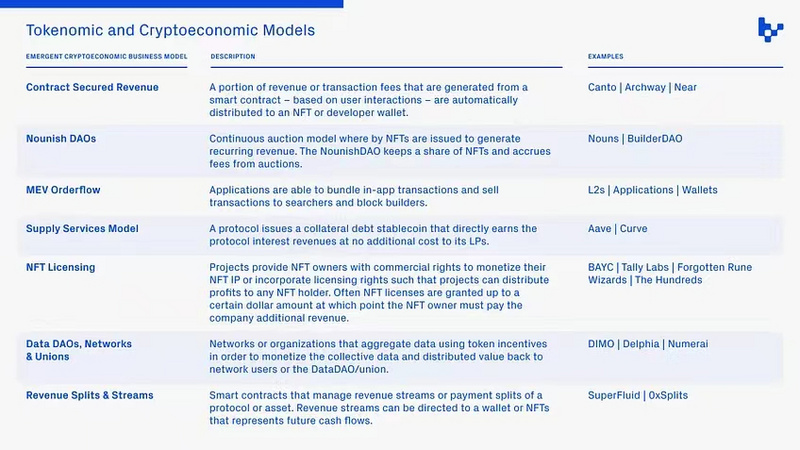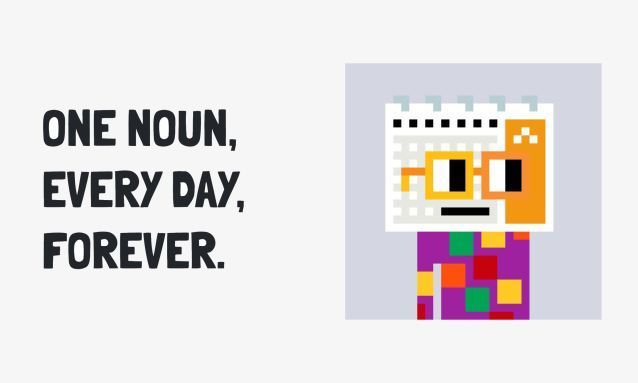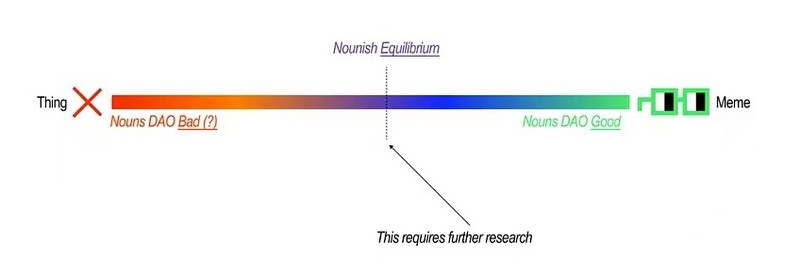Where will the next wave of disruptive innovation in the crypto space come from?
Original source: Substack, former analyst at the crypto research firm Messari Mason Nystrom
*Compiled by: * Katie Gu, translator for Odaily Planet Daily

The term "disruptive innovation" was first introduced by Clayton Christensen in the 1990s, referring to the phenomenon that occurs when new technologies combine with innovative business models, allowing new market entrants to surpass existing companies. Like every emerging technology, crypto technology is filled with groundbreaking innovations (including cryptography, mathematics, finance, and computer science). A plethora of technological innovations often means that disruptive innovations in crypto technology frequently arise from protocols and companies implementing new crypto-economic models or token distribution mechanisms.
By focusing on the new trends in token distribution mechanisms and innovations in crypto-economic models (the two components of crypto business models), we can attempt to answer the question: where will the next wave of disruptive innovation in the crypto space come from?
How do token distribution mechanisms and crypto-economic models drive innovation?
Blockchain networks provide a "blank slate" for token distribution and crypto-economic models. Bitcoin's crypto-economic model—proof of work—has spawned various new PoW currencies, the most notable being Zcash and Ethereum. While Ethereum offers various technological innovations (such as Turing completeness, smart contracts, etc.) compared to Bitcoin, Ethereum's first killer application did not gain popularity until 2017, when initial coin offerings (ICOs) utilized smart contracts and the ERC-20 token standard to distribute tokens to participants in a trustless manner. This token distribution model is crucial for the development of Web3, leading to further iterations of core concepts: initial exchange offerings, initial DEX offerings, liquidity bootstrapping pools (LBPs), automated crowdfunding platforms (like JuiceboxDAO), and more.
NFTs are another interesting technological innovation, but it wasn't until the deployment of NFT marketplaces like SuperRare, Larva Labs, and OpenSea, which facilitated the transfer of on-chain royalties, that NFTs truly exploded.
Another excellent example of the power of business model innovation compared to technological innovation is ZK technology. The scalability race of Ethereum has driven billions of dollars into zero-knowledge research, promoting the development of ZK technology. As of now, ZK rollups (such as Aztec, Scroll, Zksync, and Hemez) have become the driving force behind various breakthroughs. Now, the next wave of Ethereum scalability solutions will be driven by design innovations in crypto-economic models that incentivize ZK sequencing, proofs, attestations, and network value capture.
The next wave of crypto-economic models
Each wave of cryptocurrency has been dominated by new token distribution mechanisms and crypto-economic models. Next, let's explore three emerging models: Contract Secured Revenue (CSR), Nounish DAO, and MEV Orderflow.
On January 22, Canto announced Contract Secured Revenue (CSR), driving a significant surge in Canto.
CSR is a fee-sharing model on the Canto network that allows contract developers to extract a certain percentage from the transaction fees paid to the network when users interact with the contract, thereby earning revenue.

Contract Secured Revenue (CSR)
The Contract Secured Revenue model refers to a portion of the fees generated by smart contracts being allocated to NFTs or addresses (such as developers). On Ethereum, the fees for interacting with smart contracts are burned, and protocols generating usage do not receive any rewards for creating value, except for revenue from any application-specific transactions (such as NFT marketplace fees). Layer 1 networks like Canto use CSR as a core element to coordinate developers and economic activities. Importantly, CSR NFTs can extract fees from multiple smart contracts (for example, smart contracts of different versions of the protocol).
Another Layer 1 on Cosmos—Archway—also rewards applications on the network. Archway offers three configurable reward distribution mechanisms: gas rebates (50% of rewards to developers), inflation rewards (25% of rewards to application developers), and smart contract premiums (such as custom fees).
This utility-based model of rewarding developers or protocols provides a unique approach that does not necessarily require governance tokens as claims to revenue or demand that protocols charge additional fees on top of the network's gas costs. Furthermore, CSR as an economic business model has the potential to lower the acceptance rate of intermediaries and further coordinate applications built on top of L1/L2 or generate significant demand on existing protocols.
More interestingly, this model can apply to any type of application where a portion of demand or usage-based revenue should be allocated to stakeholders such as creators, developers, and users. Imagine if TikTok's creator fund (a crucial component for creators to earn money) adopted the CSR model, distributing a portion of inflation rewards or advertising revenue directly to content creators based on views or watch time on the platform. CSR provides a business model that can further coordinate applications built on protocols.
Nounish DAO Issuance Model
The Nounish DAO auction model—a method of NFT issuance pioneered by Nouns DAO—originally required the generation and auctioning of a new NFT indefinitely every day. However, recently we have seen a wave of NFT projects adopting the Nounish issuance model, releasing multiple NFTs daily without a deadline. Such projects belong to the Nounish DAO type.

As NFT royalties face an uncertain future, two important questions arise: where will stable income for NFTs come from, and what is the best NFT business model? Nounish DAOs are projects that utilize the Nouns auction model to continuously sell NFTs, providing a model for small communities within the larger community united by a common goal, or that can coordinate around capital composition and distribution. The Nouns generator allows anyone to create a Nounish DAO in minutes and has supported the creation of dozens of new Nounish DAOs since its launch.
Perhaps most notably, many of the early Nounish DAOs built through the Nouns generator do not focus on creating more Nouns memes, but rather seek innovative alternatives, such as the following three examples:
ArtHaus—a Nounish DAO focused on collaborating with artists, launching from ArtHaus DAO;
Spores—a Nounish DAO focused on creating next-generation remix tools for on-chain music;
BLVKHVND—the first DAO to win a professional world championship has now transitioned to the Nounish model.
The Nouns mechanism does not apply to all types of organizations. Jacob Horne, co-founder of the NFT trading marketplace Zora and the Nouns generator, hypothesizes that the Nouns model is most efficient when applied to general purposes rather than specific applications. A core component of this hypothesis is that Nounish DAOs are most effective when they can fund competitive approaches to achieving broad goals, while specific applications often do not yield significant results.

For example, consider the following broad versus specific goals:
Increase Nouns memes VS. Create Nouns movies
Create renewable infrastructure VS. Build solar farms
Carbon consumption VS. Purchase carbon credits
Nounish DAOs have several existing use cases:
Brands, Memes, and IP
Membership systems
Dedicated funds or investments
Create SoV (store of value) assets (such as artwork)
As the Nounish DAO model becomes modular, it has begun to offer features such as non-CC0 IP (for other brands and IP), minimum NFT purchase amounts (for larger funding needs), and splits (for sharing funds between other DAOs). These additions and broader experiments will expand the categories of communities and DAOs utilizing the Nounish model.
MEV Orderflow/PFTF (Payment for Transaction Flow)
As MEV is split among multiple stakeholders (i.e., searchers, block builders, and proposers), applications that control users (and thus also transaction flow) will be able to bundle user transactions and sell them to searchers and block builders in the form of private meme pools (memory pools).
Similar to how Robinhood pioneered payment for order flow (PFOF) for funds and institutions, applications (like wallets and DEXs) will be able to adopt payment for transaction flow (PFTF) processes to build blocks. With the continued growth of the MEV category and the expansion of multi-chain MEV opportunities, rollups, application chains, and super Dapps will view MEV as a new source of revenue. Another potential end state is that these PFTF profit-generating applications will redistribute their MEV order flow revenue back to users, partially in the form of gas subsidies or other discounts.
MEV will become an inseparable part of cryptocurrency. As applications and protocols incorporate MEV into their product decision-making, we may find that MEV becomes increasingly important as a core component of guaranteed revenue streams and emerging business models.
Towards Better Web3 Business Models
In fact, Web3 has yet to standardize its epoch-making business models. Today's most successful applications rely on Web2's transaction-based models—DEXs, marketplaces, etc. These models are likely to remain popular and profitable, but the ability to program and tokenize value also brings the potential for new business models. New token distribution mechanisms and crypto-economic models will become key catalysts for the next wave of experimentation and disruptive innovation.










